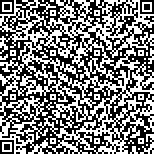下载中心
优秀审稿专家
优秀论文
相关链接
摘要

高光谱遥感可以得到地物连续光谱信息,实现地物精细分类、目标高精度探测以及地物生化参量的定量化应用。传统的高光谱遥感器由于固定辐射动态范围,存在大量无效且冗余数据,给卫星载荷造成了巨大的存储压力。智能高光谱卫星关键技术之一在于利用前视相机预判辐射动态变化范围的方式辅助主相机成像模式调整,本文在智能遥感卫星系统概念的基础上,重点开展前视相机倾斜角设计、波段设置和辐射动态范围预测研究。研究表明:前视相机倾斜角需要综合考虑星上响应时间、单次成像距离和空间分辨率;考虑到云检测、气溶胶光学厚度和水汽含量反演等指标的实现,前视相机需要设置0.49 μm、0.66 μm、0.87 μm、0.94 μm、2.1 μm等5个波段;0.4—1.0 μm波段范围最大最小值辐亮度可以由有限波段进行预测。基于ENVI光谱库76条光谱数据,通过MODTRAN辐射传输模型模拟各类地物(植被、矿物、人造地物、土壤)在不同观测条件下的表观辐亮度,建立了在0.4—1.0 μm波段内各类地物辐射动态最大值和最小值模拟模型,利用光谱库中其他光谱数据验证了各类地物辐射动态最大值和最小值模拟模型,各类地物最大值和最小值预测模型验证的拟合优度(R2)分别大于98%和75%,模型验证相对误差分别小于5%和25%;同时利用Hyperion影像,验证了植被类预测模型,最大值模拟模型验证相对偏差在5%内,最小值模拟模型验证相对偏差在10%内。以上研究为智能高光谱卫星主相机的辐射动态范围调整提供了重要依据。
In this study, the sensor bands of a fore-field sensor and the minimum and maximum radiometric range simulation models are discussed by focusing on a tilt angle. The radiation performance design of a fore-field sensor for an intelligent hyperspectral remote sensing satellite with a spectral range of 0.4-1.0 μm is examined. This study provides an important reference for the dynamic range adjustment of the main camera of the hyperspectral remote sensing satellite.
The tilt angle of a fore-field sensor is affirmed by considering the processing time, imaging distance, and spatial resolution. The fore-field sensor bands are set by achieving cloud detection, aerosol optical thickness, and water vapor retrieval. The radiance of numerous objects is simulated using MODTRAN. The minimum and maximum radiometric range simulation models are built on the basis of the radiance of several bands with a spectral range of 0.4-1.0 μm.
The tilt angle of a fore-field sensor with a width of 100 km is 11° given the response time of 2 s for the fore-viewing sensor processing and main sensor adjustment. The minimum five spectral bands are 0.49, 0.66, 0.87, 0.94, and 2.1 μm. These bands are carefully selected to identify clouds and estimate aerosol parameters and water vapor. The minimum and maximum radiometric range simulation models can be constructed using the radiance of several bands, with a spectral range of 0.4-1.4 μm. The maximum radiance of vegetation, mineral, soil, and man-made environment can be predicted using a radiance with wavelengths of 0.66 and 0.87; 0.49, 0.66, and 0.87; 0.49 and 0.66; and 0.49 μm, respectively. The minimum radiance of vegetation and mineral can be predicted using a radiance with a wavelength of 0.66 μm. The minimum radiance of soil and man-made environment can be predicted using a radiance with a wavelength of 0.49 μm. The verification correlation of the maximum radiometric range simulation model reaches 0.98, with an accuracy maintained at 0.05. The verification correlation of the minimum radiometric range simulation model reaches 0.75, with an accuracy maintained at 0.25.
The fore-viewing angle allows the onboard device to have additional time in updating the radiometric dynamic range for the hyperspectral sensor to achieve the cloud detection and parameter retrieval methods. The fore-viewing sensor must obtain at least five spectral bands, namely, 0.49, 0.66, 0.87, 0.94, and 2.1 μm. In the spectral range of 0.4-1.4 μm, the radiance range of the vegetation, mineral, soil, and manmade environment can be predicted using the radiance with wavelengths of the few designed bands. An appropriate radiance range is important for the main camera to adjust its dynamic range by optimizing the gain values. As expected, additional detailed ground surface information can be recorded. In the future, an increasing number of ground objects and other spectral ranges must be investigated.

